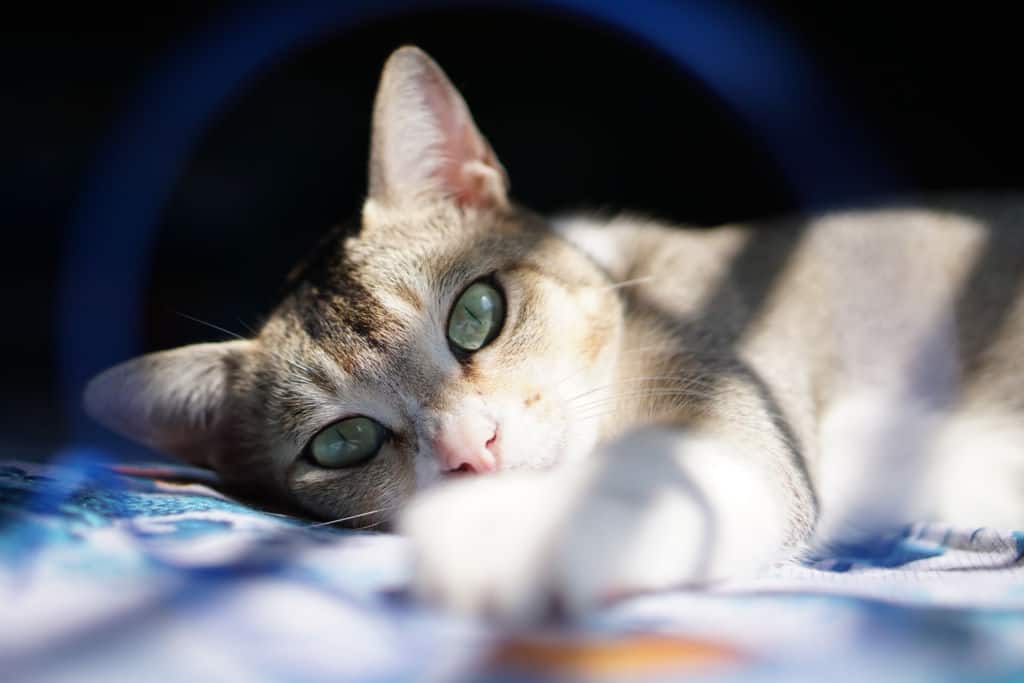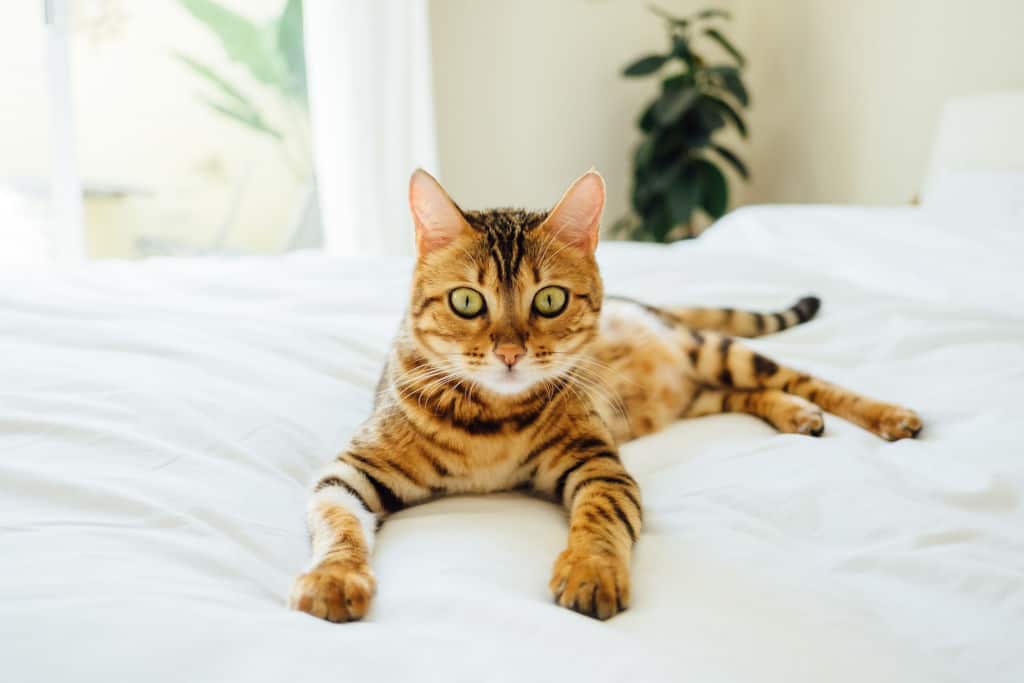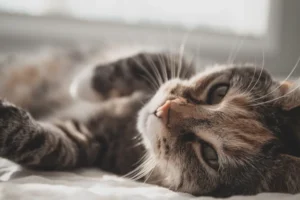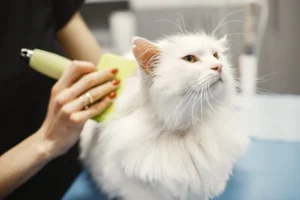If you’re a cat owner, you know that your feline friend is much more than a pet – they’re a beloved family member. As a responsible cat owner, you want your feline friend to have a long and healthy life.
In this guide, we’ll explore common health issues in cats and provide preventative measures to keep your feline friend happy and healthy. By implementing these tips, you can help your cat avoid health problems and enjoy many happy years by your side.
So, let’s dive into the most common health problems in cats and the steps you can take to prevent them.

Obesity: Why Overweight Cats are at Risk
Obesity is a significant health concern for cats.
It can lead to a range of problems, including diabetes, arthritis, and heart disease.
Let’s explore the causes of obesity in cats, the signs to watch out for, and the steps you can take to prevent it.
Causes of Obesity in Cats
There are several reasons why cats become overweight. The most common cause is overfeeding. Cats are natural grazers, but many cat owners leave food out all day, leading to excessive consumption.
Lack of exercise is another factor, as indoor cats may not get enough opportunities to burn off excess calories. Certain factors, such as genetics, may also contribute to obesity in cats.
Remember, just like us, cats can get bored too. So, integrating short, fun exercise routines can double up as a playtime, addressing both their physical and mental cat health concerns.
Signs of Overweight Cats
It can be challenging to tell if your cat is overweight, especially if they have a thick coat. However, there are some signs to watch out for.
These include a sagging belly, difficulty jumping, and reduced activity levels. You may also notice that your cat’s ribs are difficult to feel under their skin. In addition, you can check this body condition scoring chart for cats:

Preventive Measures to Keep Your Cat Slim
Preventing obesity in cats is all about managing their diet and exercise levels.
First, ensure you’re feeding your cat a high-quality, balanced diet in appropriate portions. You can also use puzzle feeders or toys to make mealtime more engaging for your cat.
Encourage exercise by providing toys, scratching posts, and opportunities for interactive play with laser pointers or wand toys, which cats especially love. If your cat is already overweight, talk to your vet about a safe weight-loss plan. For a full guide to manage obesity, go here.
Dental Problems: Why Good Oral Hygiene is Key
You might think cats are naturally resistant to dental issues given their wild ancestry, but domestication and commercial diets have changed the game.
According to research, many cats aged four and above experience some degree of dental disease, ranging from mild to severe.
Cats can suffer from various dental problems, including gum disease, tooth decay, and periodontitis. These issues can be painful and lead to more severe health problems if left untreated.
Common dental problems in cats include gingivitis, periodontal disease, and tooth resorption. It’s important to address dental issues early on, as they can lead to more severe health problems, such as kidney and heart disease if left untreated.
Causes of Dental Problems in Cats
Poor dental hygiene is the most common cause of dental problems in cats. When bacteria and food particles build up on a cat’s teeth and gums, they can lead to inflammation, infection, and other issues.
Genetics can also play a role, as some cats may be more prone to dental problems than others.
Signs of Dental Problems in Cats
It can be challenging to tell if your cat has dental problems, as they are experts at hiding their pain.
However, there are some signs to watch out for. These include bad breath, drooling, reluctance to eat, bleeding gums, and loose or missing teeth. You may also notice your cat pawing at their mouth or avoiding hard food.
Preventive Measures for Good Oral Hygiene
Maintaining your cat’s oral hygiene is crucial in preventing dental issues. We have a full guide here, but here are the main steps to take.
First, ensure your cat has regular dental check-ups with their vet, who can identify and treat any issues early. You can also brush your cat’s teeth at home using cat-specific toothpaste and toothbrush.
Finally, feeding your cat dental treats or toys and providing opportunities for chewing can also help keep their teeth and gums healthy.
Parasites: Why Fleas and Ticks are More Than Just a Nuisance
Fleas and ticks are common parasites that can cause various health problems for cats, including skin irritation, anemia, and even diseases like Lyme disease. Taking preventative measures to protect your cat from these pests is essential.
Some parasites, such as heartworm, can even be life-threatening. Prevention is key, and regular check-ups with a veterinarian, as well as keeping your cat on a preventative medication regimen, can help protect your cat from these pesky critters.
Causes of Fleas and Ticks in Cats
Cats can pick up fleas and ticks from other animals, the outdoors, or even from the indoor environment. Once they’ve become infested, fleas and ticks can lay eggs in your cat’s fur, leading to a full-blown infestation.
Signs of Fleas and Ticks in Cats
Fleas and ticks are visible to the naked eye, and you may notice them on your cat’s fur or skin. However, you may also notice other signs of infestation, such as scratching, biting, and excessive grooming. Flea dirt, or black specks in your cat’s fur, can also indicate a flea infestation.
Preventive Measures to Protect Your Cat from Parasites
Preventing flea and tick infestations in cats is all about using preventative measures. Here are some ways to keep your cat protected:
- Use a flea and tick preventative recommended by your vet, which can come in the form of a collar, spot-on treatment, or oral medication.
- Keep your cat indoors or supervise them when they’re outdoors to reduce their exposure to fleas and ticks.
- Regular grooming and cleaning your cat’s bedding can also help prevent infestations.
Taking these preventative measures can help protect your cat from the discomfort and health risks associated with fleas and ticks.

Urinary Tract Disorders: The Importance of Hydration
Urinary tract disorders are a common health problem in cats, particularly males and overweight cats. Left untreated, they can cause severe health problems.
For example, a urinary tract obstruction can cause kidney damage and even renal failure if not promptly treated. Let’s take a look at what causes them and what you can do.
Causes of Urinary Tract Disorders in Cats
Urinary tract disorders in cats can be caused by various factors, including urinary tract infections, bladder stones, and feline lower urinary tract disease (FLUTD).
One contributing factor to urinary tract disorders in cats is inadequate hydration, which can lead to concentrated and acidic urine that provides an ideal environment for bacteria and crystals to grow. Other factors contributing to UTDs in cats include stress, obesity, and genetics.
Suggested read: Hydration Guide for Cats
Signs of Urinary Tract Disorders in Cats
The signs of a urinary tract disorder in cats can vary, but may include urinating outside the litter box, straining to urinate, frequent urination, and blood in the urine. You may also notice your cat is more lethargic, irritable, or appears to be in pain when urinating.
Preventive Measures to Help Your Cat Avoid UTDs
To help your cat avoid urinary tract disorders, make sure they have access to plenty of clean water and consider offering a wet food diet, which can increase their overall water intake.
Keep your cat’s litter box clean and provide ample opportunities for them to urinate. If your cat has a history of urinary tract disorders, talk to your vet about specialized diets or supplements that may help prevent a recurrence.
Respiratory Issues: Why Good Air Quality is Essential
Respiratory issues are a common health problem in cats, particularly those that live in urban or densely populated areas. They can cause discomfort, breathing difficulties, and even more severe health problems if left untreated.
By learning about the causes, signs, and prevention of respiratory issues in cats, you can help your feline friend stay healthy and happy.
Causes of Respiratory Issues in Cats
Respiratory issues in cats can be caused by a range of factors, including exposure to smoke, dust, and other airborne pollutants. Respiratory infections, such as feline herpesvirus or calicivirus, can also lead to respiratory problems.
Some cats, particularly those with flatter faces like Persians and Himalayans, may be more susceptible to respiratory issues due to their facial structure. If you have a flat-faced cat, try to keep your home’s humidity balanced. Too damp can make their breathing harder, while too dry can dry out their nose.
Signs of Respiratory Issues in Cats
The signs of respiratory issues in cats can vary, but may include coughing, sneezing, nasal discharge, and labored breathing. You may also notice your cat has reduced appetite, lethargy, or appears to be in distress.
Preventive Measures to Help Your Cat Breathe Easy
Ensuring good air quality and hygiene can help prevent respiratory issues in cats. Keep your home well-ventilated, smoke-free, and dust-free.
Using an air purifier can help reduce airborne irritants and improve the air quality in your home, which can be especially beneficial for cats with respiratory issues. If you’re a smoker, consider smoking outside to reduce your cat’s exposure to secondhand smoke.
Regular cleaning, including vacuuming and dusting, can also help reduce airborne irritants.
If your cat has a history of respiratory issues, talk to your vet about specialized diets or supplements that may help support their respiratory health.
Other Common Health Issues in Cats
Several other health problems can affect our feline friends. In this section, we’ll briefly touch on hairballs, vomiting and diarrhea, and the steps you can take to prevent them.
Hairballs
Hairballs are a common issue for cats, particularly those with long hair. While they are typically harmless, frequent hairballs can lead to gastrointestinal issues.
To help your cat manage hairballs, consider brushing them regularly to remove loose hair, providing a high-fiber diet, and using hairball remedies like lubricants or specialized diets.
Regular brushing not only helps with hairballs but also serves as a bonding time and helps in spotting early signs of skin-related health issues.
Vomiting and Diarrhea
Various factors, including diet changes, infections, and parasites, can cause vomiting and diarrhea. If your cat is experiencing vomiting or diarrhea, ensure they have access to plenty of water and consider feeding them a bland diet of boiled chicken and rice.
If their symptoms persist or worsen, consult your vet for further evaluation and treatment.
Conclusion
As a cat owner, it’s crucial to take an active role in maintaining your feline friend’s health and well-being. By staying informed about common health issues in cats and taking preventative measures, you can help your cat avoid health problems and enjoy many happy years by your side.
Regular vet check-ups are crucial to cat preventative care and can help identify health issues before they become more severe.
Remember to maintain good oral hygiene, prevent parasites, ensure proper hydration, and keep your home clean and well-ventilated. Following these tips and taking preventative measures can help your cat avoid health problems and live a long, happy, and healthy life.
Alex, a passionate animal lover, has experience in training and understanding animal behavior. As a proud pet parent to two dogs and three cats, he founded AnimalReport.net to share insights from animal experts and expand his knowledge of the animal kingdom.




